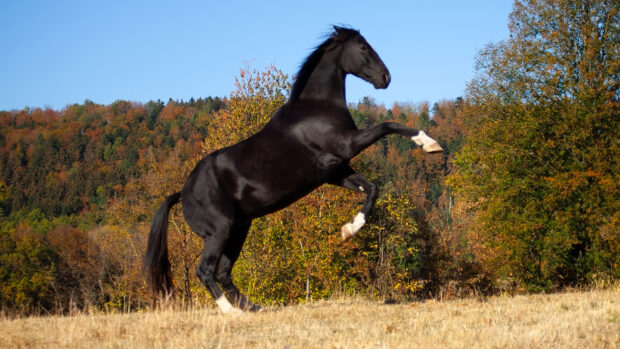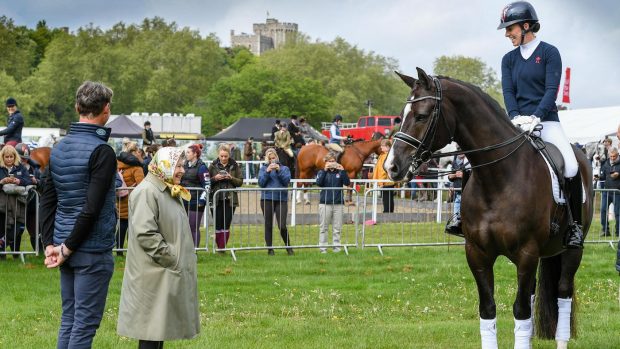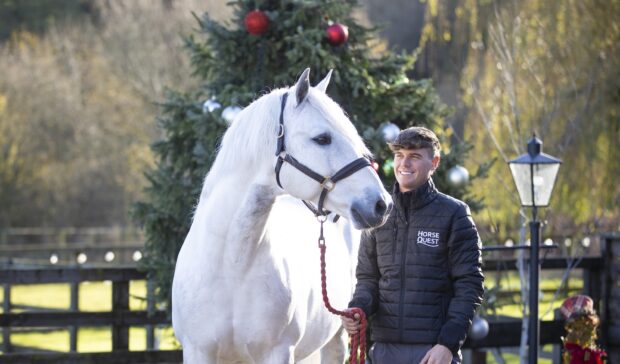A new “suitably mounted” working group aims to help tackle the issue of incompatible horse-rider combinations, across the industry.
The group has come together to address the issue of rider size and help those who are looking to tackle it. H&H has reported on rules and policies brought in by events and organisations, and one aim is to support others hoping to do the same.
Researcher Tamzin Furtado, one of those behind the group, told H&H it came about after discussion of the issue across the industry.
“This is for everyone,” she said. “Every riding school, event, organisation – all of us. Anyone who feels like they need someone to help tackle a tricky issue, there’s nowhere to go.
“I was working with Amanda Stoddart-West of the Great Yorkshire Show [GYS] on equine obesity, and she’s involved with the show’s rider-weight rules, and we were talking about how there are no resources for anyone who needs to think about this.”
Dr Furtado said the evidence on defining suitable rider size “can be confusing” and it can be difficult to know who to ask for advice.
“So I thought it would be good to have a resource, so people can ask questions of those on top of the literature we do have,” she said.
The group includes show organisers and researchers, as well as experts in veterinary and equine welfare – and human mental health. Members will collate and review existing research and are open to collaboration. They will also advise anyone who wants to introduce guidelines and put them in touch with those who have already done so.
“They can get advice from people who have been there,” she said. “We’ve got a mental health professional on board to make sure it’s done sensitively, as it can be a tricky issue.”
Dr Furtado added that so much needs to be taken into account when determining rider suitability, including equine conformation, condition and fitness. The group will also look at enforcement of any guidelines – some organisations have them but it is not clear how they are followed up, which she said must be in a way that is supportive of people and of horse welfare.
“It’s definitely not about people being overweight or not,” she added. “It’s about making sure the fit is right. As has been said, the ideal weight for a horse to carry is 0%, so we need to be on the conservative side.”
Mrs Stoddart-West, entries and livestock coordinator for the GYS, which brought in a maximum rider weight rule in 2016, is on the group. She told H&H she would like to see such guidelines across the board.
“It’s not just in the showing world, it’s an issue in several disciplines,” she said, adding that she has had comments from all over the world since the Royal Three Counties show followed the GYS’ lead in imposing a rider-weight rule.
“I’ve heard from people in Australia and the US saying they’d love to see this worldwide. I’ve been contacted by vets, breeders, judges, saddlers – the support has been phenomenal, and they all want to help.”
Mrs Stoddart-West added that they are building a “team” of people available to go to shows and events to help enforce such policies in a sensitive way.
“It’s not just about telling people to get off because they’re too big, it’s trying to educate so this becomes the norm,” she said. “It’s about being suitably mounted, from a welfare stance and putting the animal first. I think there’s a considerable appetite for it now, eyes have been opened and I think people realise things need to change, particularly in light of social licence. I think we need industry leaders to take this on and set the standards, then it would hopefully filter down: this is what’s acceptable and this isn’t.
“I’m delighted this group has been formed, and hopefully we can make a difference for horse welfare and the longevity of equestrianism.”
Imogen Burrows, chair of the British Equine Veterinary Association ethics and welfare committee, and member of the group, told H&H a mismatch in load or height can have serious equine health and welfare implications, “not least if the horse is unfit, older or has an underlying health condition”.
“This is a consideration for all disciplines, ridden and driven, with rules relating to height and weight already in place across many equestrian activities.
“We applaud this group for bringing together professionals from many fields who are able to tackle this delicate topic with the knowledge, science and sensitivity needed to support riders with best-practice information and preserve the wellbeing of our horses.”
Ms Burrows added that although “for many years the finger has been pointed” at showing as the main culprits in this issue, the group “greatly admires them for opening their doors to change”, such as on the healthy weight awards, which are making a difference.
“The working group is now striving to gather much needed evidence to support other groups and individuals, to give them the courage to address this welfare issue with justified confidence,” she said.
You might also be interested in:

‘I’m proud we’ve done this’: 12 oversized riders asked to dismount at major show

British Dressage brings in rider weight guidance for horse welfare

HOYS removes qualifiers after show stands firm on its rider-size rule

Subscribe to Horse & Hound magazine today – and enjoy unlimited website access all year round
Horse & Hound magazine, out every Thursday, is packed with all the latest news and reports, as well as interviews, specials, nostalgia, vet and training advice. Find how you can enjoy the magazine delivered to your door every week, plus options to upgrade your subscription to access our online service that brings you breaking news and reports as well as other benefits.




